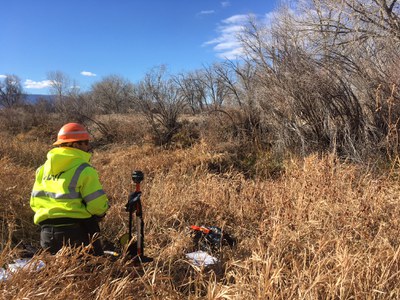Field Guides & Tools
The following is a partial list of relevant tools for delineating and classifying wetlands. CDOT does not endorse any private companies.
Regional Wetland Delineation Supplements & Automated Data Sheets
-
Arid West Region
-
Western Mountains, Valleys, and Coasts Region
-
Great Plains Region
National Wetland Plant List
The U.S. Army Corps of Engineers, as part of an interagency effort with the U.S. Environmental Protection Agency, the U.S. Fish and Wildlife Service and the U.S. Department of Agriculture Natural Resources Conservation Service, developed the National Wetland Plant List (NWPL) that is updated often. The NWPL is used to determine whether the hydrophytic vegetation parameter is met when conducting wetland determinations under the Clean Water Act and the Wetland Conservation Provisions of the Food Security Act. The list must be used in all wetland delineations performed.
Ordinary High Water Mark
The U.S. Army Corps of Engineers and the U.S. Environmental Protection Agency jointly announced the availability of the Final National Ordinary High Water Mark Field Delineation Manual for Rivers and Streams (Final National OHWM Manual). The Final National OHWM Manual serves as a non-mandatory technical resource which can be used in appropriate situations to assist with identifying and delineating the ordinary high water mark (OHWM) of rivers and streams located throughout the Nation. The full manual can be found here.
Other Helpful Tools:

- Colorado Natural Heritage Program (CNHP) resources
- Colorado Wetland Information Center - The most complete collection of wetland resources in Colorado
- Colorado Wetland Inventory - Colorado's improved NWI maps
- Colorado Wetlands Mobile App - The App contains wetland plants, maps, and wetland types.
Wetland Plant Guides
- CNHP Wetland Plant Field Guides:
- NRCS PLANTS Database
- USDA Field Guide to Intermountain Rushes
- USDA Field Guide to Intermountain Sedges
Wetland Soil Guides
- NRCS Technical References for Soils
- Field Indicators of Hydric Soils in the United States, NRCS Version 9.0, 2024
- Colorado Hydric Soils List (choose 'Colorado' in dropdown list)
- National Association of Wetland Managers - Hydric Soils Online Training Series
